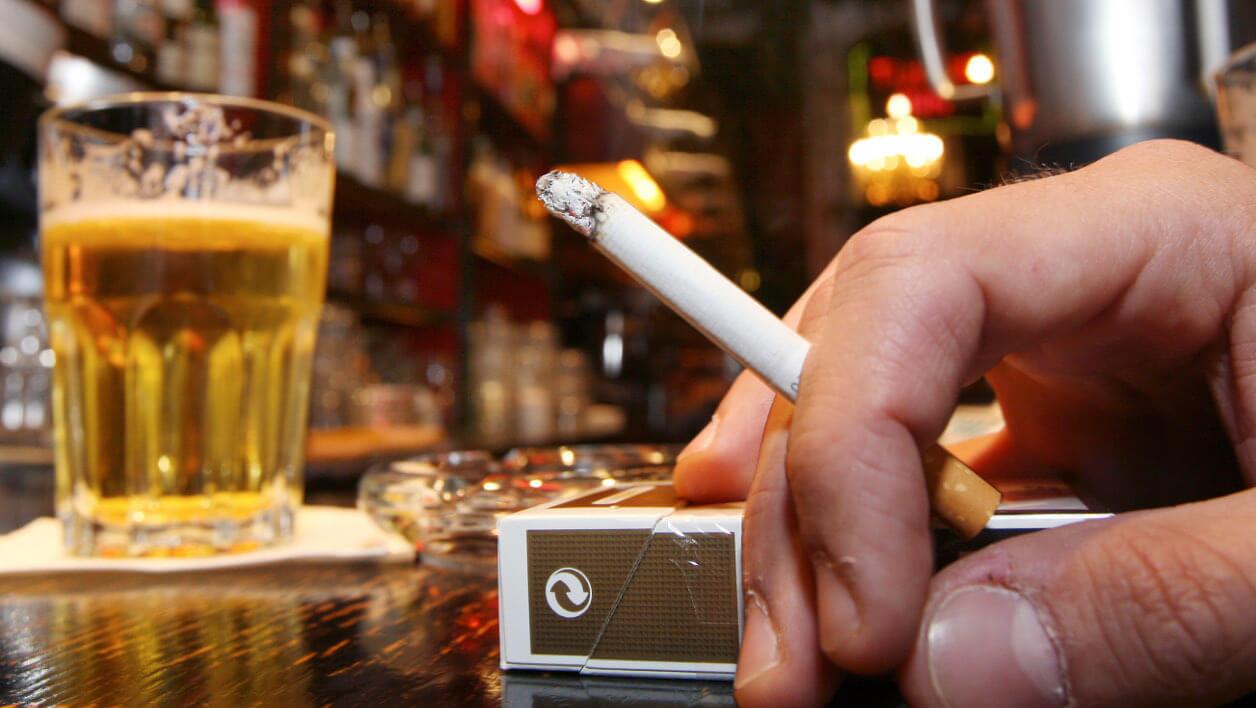The Unseen Danger: How Smoking Fuels the Growth of Pulmonary Aspergilloma
For many, a persistent cough is merely an annoyance, a lingering reminder of a past cold. But for some, particularly long-term smokers, that cough can be the first whisper of a far more serious condition brewing within the lungs. Deep within the scarred and damaged airspaces, a silent tenant can take up residence: a fungus known as Aspergillus. This common mold, harmless to most, finds a perfect home in the cavitary lesions left by previous lung diseases, forming a tangled ball of fungus called a pulmonary aspergilloma. While the mere existence of this "fungus ball" is a concern, emerging evidence points to a critical and modifiable risk factor that actively promotes its enlargement: smoking.

To understand this dangerous relationship, we must first journey into the intricate ecosystem of the human lung. Imagine the lungs as a pristine, inverted tree. The trachea is the trunk, branching into smaller and smaller bronchi and bronchioles, ending in millions of tiny air sacs called alveoli. This is where the vital exchange of oxygen and carbon dioxide takes place. It's a system designed for efficiency and, crucially, sterility. A sophisticated defense team—including mucus, tiny hair-like structures called cilia, and specialized immune cells—works tirelessly to trap and eject inhaled particles, including spores of the Aspergillus fungus that are ubiquitous in our environment.
Now, introduce tobacco smoke. This is not a single substance but a toxic cocktail of over 7,000 chemicals, many of which are poisonous and carcinogenic. With every puff, this assault begins. The first line of defense crumbles. The cilia, those diligent janitors, become paralyzed and damaged, losing their ability to sweep debris upward. In response, the lining of the airways goes into overdrive, producing thicker, stickier mucus. This combination—stagnant mucus and impaired clearance—is the first step in creating a hospitable environment for pathogens.
But smoking’s damage goes much deeper, directly enabling the conditions for a pulmonary aspergilloma to form and flourish. One of the most significant long-term consequences of smoking is the development of chronic obstructive pulmonary disease (COPD), a destructive condition characterized by emphysema and chronic bronchitis. Emphysema involves the irreversible destruction of the alveolar walls, creating larger, inefficient air spaces—essentially cavities within the lung parenchyma. These cavitary lesions are the sine qua non for an aspergilloma. The fungus ball doesn't create the cavity; it moves into a pre-existing one, much as a hermit crab occupies an empty shell. Therefore, the very act of smoking, by causing the lung damage that leads to cavity formation, is the primary architect of the real estate that the aspergilloma will later inhabit.
However, the story doesn't end with just providing a home. Smoking actively promotes the enlargement of these fungal masses. It does this through a multifaceted attack on the body's immune surveillance system, the very system designed to keep fungal growth in check.
The Immune System Under Siege
Our immune system has specialized cells called alveolar macrophages. Think of them as the elite security guards of the air sacs. Their job is to patrol, identify, and engulf foreign invaders like Aspergillus spores. Research has consistently shown that tobacco smoke suppresses the function of these critical cells. It impairs their ability to recognize, chase, and digest the fungal spores. With the guards effectively blinded and tied down, the inhaled Aspergillus spores have a much higher chance of surviving, settling, and germinating within a lung cavity.
Furthermore, smoking creates a state of chronic inflammation in the lungs. While inflammation is a normal part of the immune response, the constant, dysregulated inflammation caused by smoking is destructive. It's like having a fire alarm that never turns off; eventually, people stop responding. This chaotic inflammatory environment disrupts the coordinated efforts of other immune cells, such as neutrophils, which are crucial for attacking hyphae—the branching, thread-like structures the fungus forms as it grows. This breakdown in coordinated immune defense creates a permissive environment where the aspergilloma can slowly but steadily expand, adding more fungal threads to its structure.
The Vicious Cycle of Symptoms and Growth
As the aspergilloma enlarges, the symptoms for the patient become more pronounced and distressing. The most common symptom is hemoptysis—coughing up blood. This can range from minor blood-streaking in the sputum to life-threatening hemorrhage. The mechanism is twofold. First, the fungal ball itself is highly antigenic, meaning it provokes a strong local immune response. The blood vessels in the cavity wall, known as the pleural blood vessels, become fragile and engorged as immune cells congregate. Second, the constant friction and movement of the rough, tangled fungus ball against these delicate blood vessels can erode them, causing bleeding.
Here, smoking plays another insidious role. The chronic bronchitis associated with smoking leads to frequent, violent coughing fits. Each of these fits jostles the aspergilloma, increasing the mechanical abrasion against the blood vessel-rich cavity wall. Therefore, smoking not only promotes the growth of the lesion but also actively increases the risk of its most dangerous complication. This creates a terrifying feedback loop: smoking causes the cavity, allows the fungus to grow, and then provokes the coughing that leads to bleeding from the growing mass.
Addressing the Core of the Problem: Smoking Cessation
When faced with a diagnosis of pulmonary aspergilloma, the treatment focus is often on managing the fungus ball itself, through antifungal medications like voriconazole or itraconazole, or surgical intervention for high-risk cases. However, the single most impactful and proactive step a patient can take is to stop smoking. The benefits of smoking cessation in halting the progression of pulmonary aspergilloma are profound and begin almost immediately.
Within just weeks of quitting, the lung's natural defense mechanisms start to recover. The cilia begin to regenerate and regain their function, improving the clearance of secretions and spores. The paralyzing effect on alveolar macrophages starts to reverse, allowing the immune system to mount a more effective defense against the existing fungal mass. While the existing cavitary damage from COPD may be permanent, stopping the ongoing assault of smoke allows the lung environment to stabilize. This stabilization is critical in creating conditions that are less favorable for the aspergilloma to continue its expansion. It is the cornerstone of preventing further lung function decline and managing the long-term risks associated with this condition.
For patients and their loved ones, understanding this connection is empowering. The diagnosis of a pulmonary aspergilloma can feel overwhelming, a problem born from past infections like tuberculosis or the slow progression of COPD. But the factor of ongoing smoking is a variable that remains within an individual's control. By choosing to quit, a person is not just improving their overall health; they are directly intervening in the biological process that is fueling the growth of a dangerous pulmonary infection.
In conclusion, the link between smoking and the promotion of pulmonary aspergilloma enlargement is clear, compelling, and deeply rooted in pathophysiology. From creating the foundational cavitary lesions to disarming the immune system and exacerbating life-threatening complications, tobacco smoke is a powerful catalyst in this disease process. For those living with or at risk for a fungus ball in the lung, acknowledging this connection transforms smoking cessation from a general health recommendation into a targeted, non-negotiable therapeutic strategy. It is the key to silencing the growth of an unseen danger and reclaiming the health of one's lungs.













